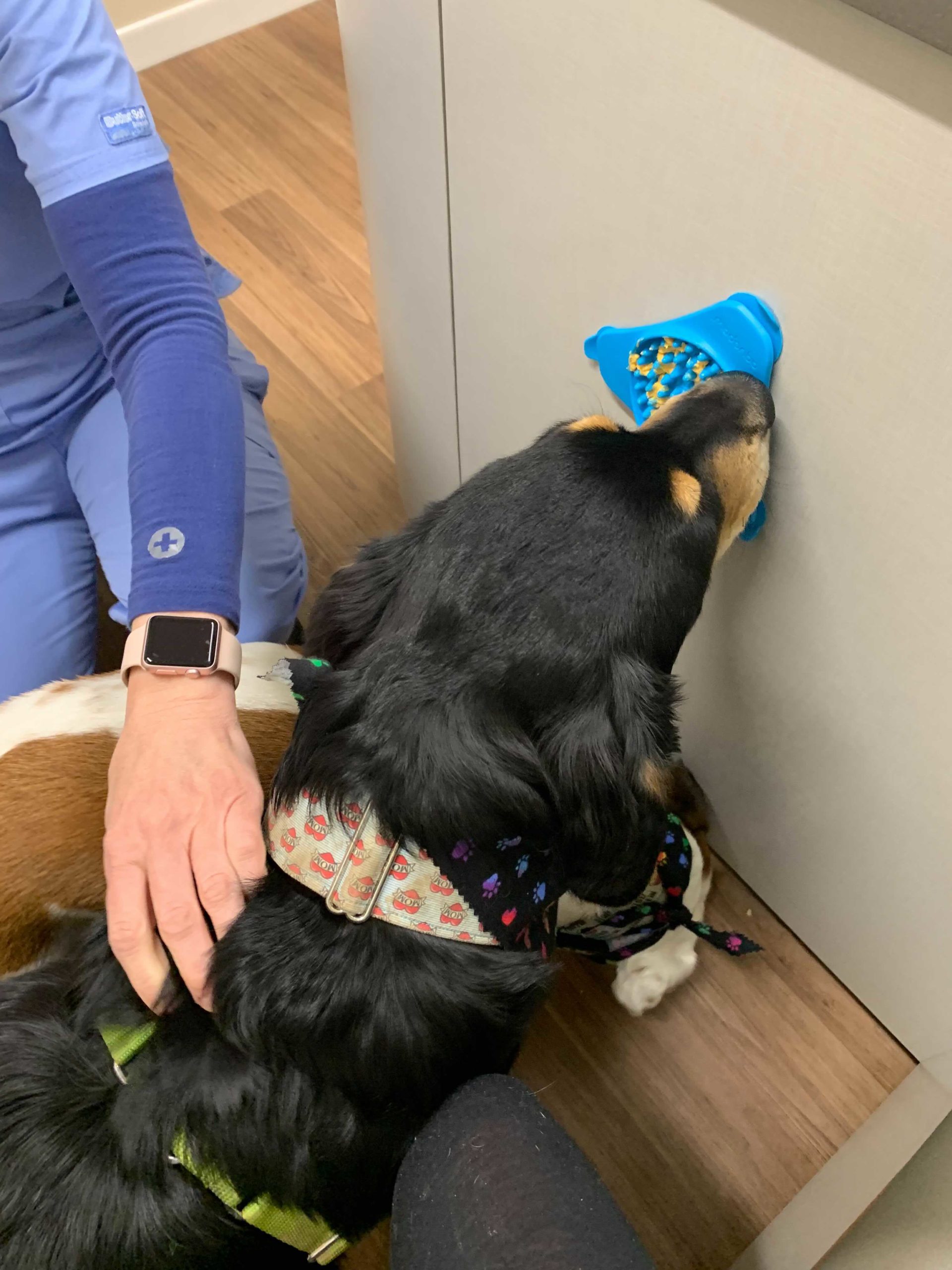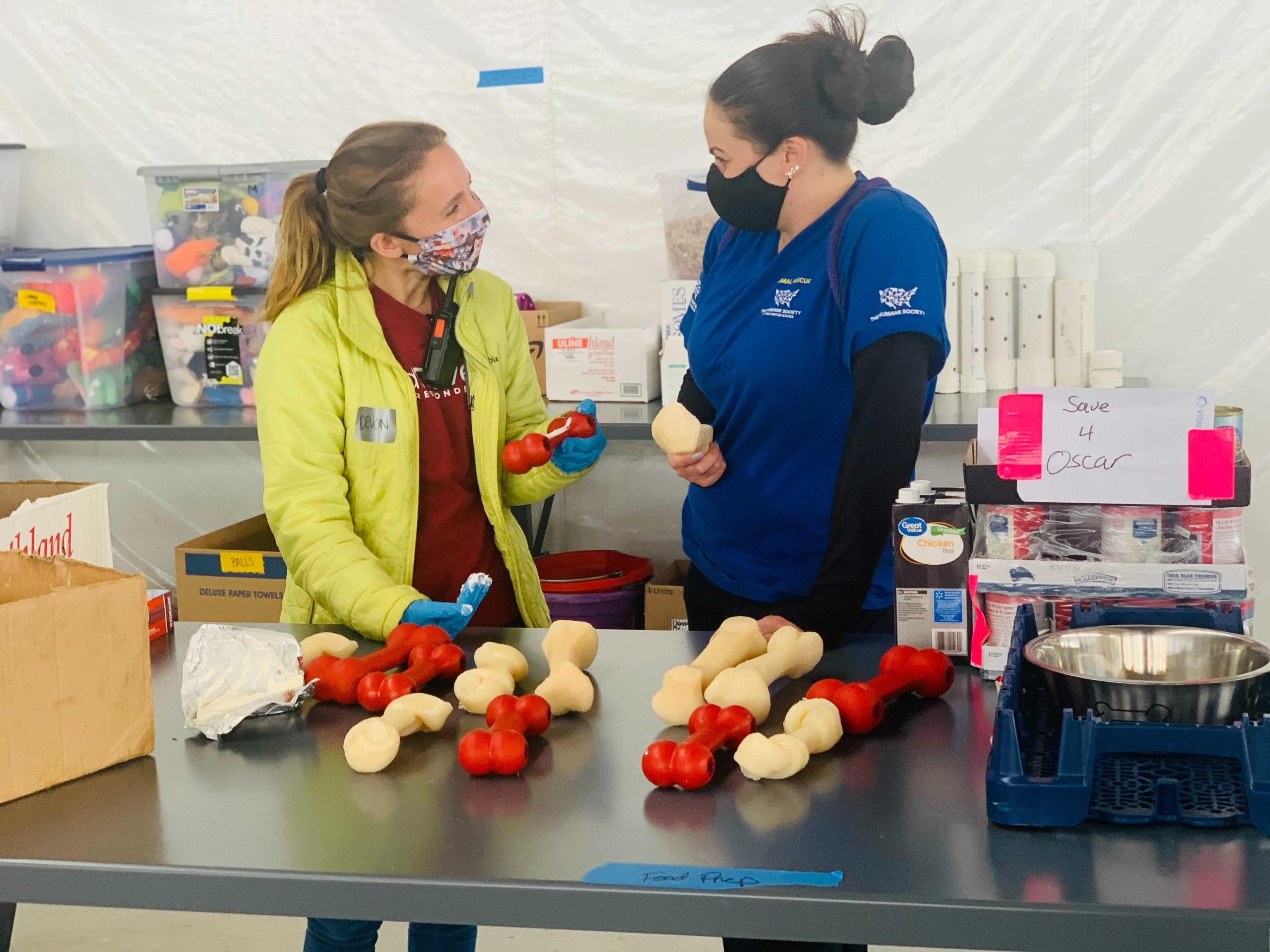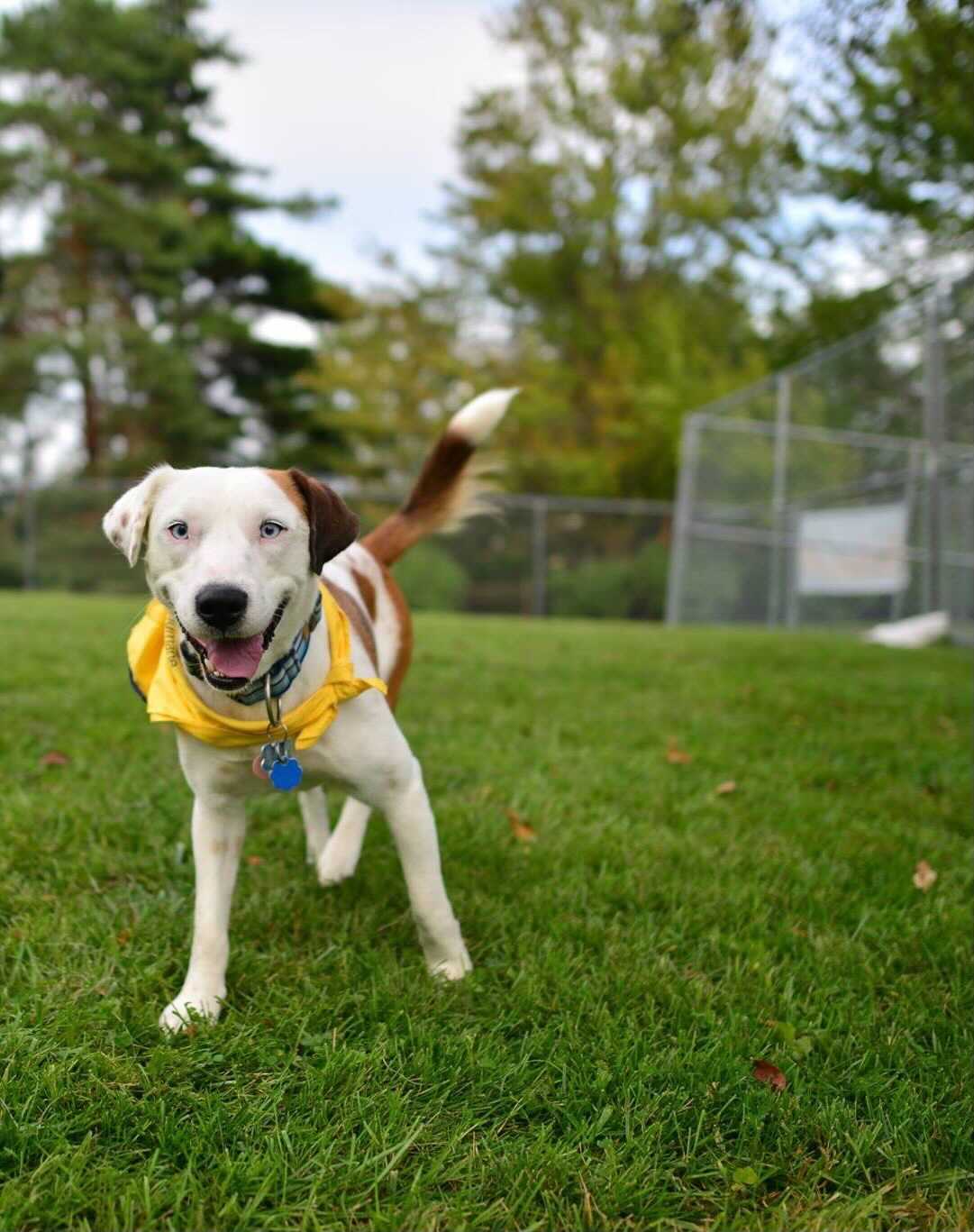Off to Work We Go: Tips to Prepare Our Dogs
By Devon Krusko, CPDT-KA, Field Services and Outreach Coordinator,
New England Federation of Humane Societies Board Member
My daily life – and likely yours – looks different than it used to, and it’s different for our pets, too. If you’re returning to the workplace, even incrementally, here are a few tips to make the transition a bit easier on your beloved doggo(s) – or should I say, co-worker!
Prep for a new schedule
Ideally, ease your dogs into the new schedule by starting to prepare them for the change now. Dogs learn by association, and they know that behaviors create a sequence that predicts an outcome. For example, when I pick up my dog’s harness it means we’re going for a walk — and whether or not I was just moving the harness, my pup will display his excitement. He knows what the harness means because many, many times this sequence has happened and many, many times this sequence has predicted that he will get to go outside and have the grandest time. Our dogs are aware of our behaviors when we gear up to leave the house. So, start to think about your routine before you leave the house.

Devon’s dog Riggs enjoying peanut butter on a lick mat
Once you’ve identified your actions, begin going through the motions but don’t actually leave. Be calm, and don’t make a big deal about what you’re doing. Instead, after you’ve grabbed your coat and keys, hang them back up and unload the dishwasher or start the laundry. Show your dog that these actions don’t always mean that you leave. Then, over a few days, do your same routine and leave for very short periods of time: get the mail or go for a walk around the neighborhood. Continue to increase the duration of your absence and mix in times when you don’t leave.
While doing this, get back on your normal feeding, walking, and potty break schedule as soon as possible if it’s slipped a bit while you’ve been working from home.
Enrichment
We know our dogs need novel toys, treats, and things to do when left alone — otherwise, they may find their own (less constructive) fun! It can be easy to think “My dog has so many toys to play with,” but we must remember that these become the same old boring toys in our dog’s mind. If you were left home alone all day, would you want to watch the same episode of the same show day after day? Prep enrichment for your dog like a frozen Kong or a Topple filled with cheese, yogurt, or wet food, or make a busy box. You can also create a lick mat or a Groov that can be attached to your dog’s crate.
The bottom line? Leave your dog with stimulating things to do when you’re not around to keep the experience positive. If you haven’t tried these different types of enrichment with your dog, you’ll want to do so before leaving them alone with the above recommendations to ensure they interact safely with them.

Devon with HSUS preparing enrichment activities for dogs rescued from a South Korean dog meat farm.

Devon’s dog Bilbo enjoying stimulating playtime at the park.
Exercise
Tire ‘em out! You may need to alter your schedule to tire your pup out before you leave for the day, but it will be an important factor for a successful transition. Leaving an amped-up, hyper dog alone is typically not successful for anyone.
Dog Proof
Prep the house for pup safety and set your dog up for success. Dogs are dogs, and when left alone there are some activities that may be hard to resist. Is the garbage secure? Did you leave food on the counter? Toilet paper shreds beautifully, and your leather boots provide the most delightful texture to chew. If you come home to a mess, do your best to remain calm and not punish your pup. Remember, your dog doesn’t get into things because they are mad that you left or because they are being a “jerk.” Recognize what your dog was feeling while you were gone: boredom, anxiety, fear, and/or frustration. What can you do to help them feel differently?

Ask for help
Lastly, it’s important to note that separation anxiety (SA) is very, very real. If your dog is showing signs of serious SA such as breaking out of a crate, injuring themselves, or destroying furniture, etc., it’s important that you consult with a veterinary behaviorist. Serious SA is not something your dog will grow out of, and the most important part of addressing SA is to not place your dog in a situation where they are anxious (e.g. being left alone or crated). In this case, you’ll need to manage your dog’s day differently with a sitter or doggie daycare while you work on an actual SA plan with a professional. This typically requires medication so that your dog is in a mental state that will allow learning, with the goal of weaning them off of it as they grow more confident and less anxious. To find a trainer in your area for general guidance, visit the International Association of Animal Behavior Consultants or the Certification Council for Dog Trainers to search their directories.
Ultimately, be an advocate for your sweet pupper, give them tools to succeed, and understand that adjusting to a new change can take time (for all of us)!

